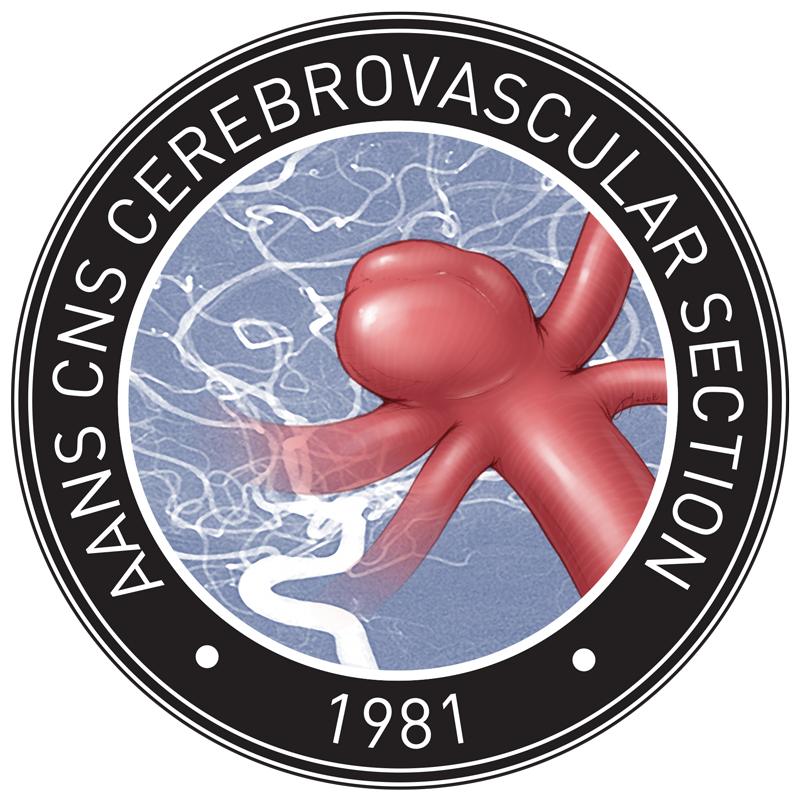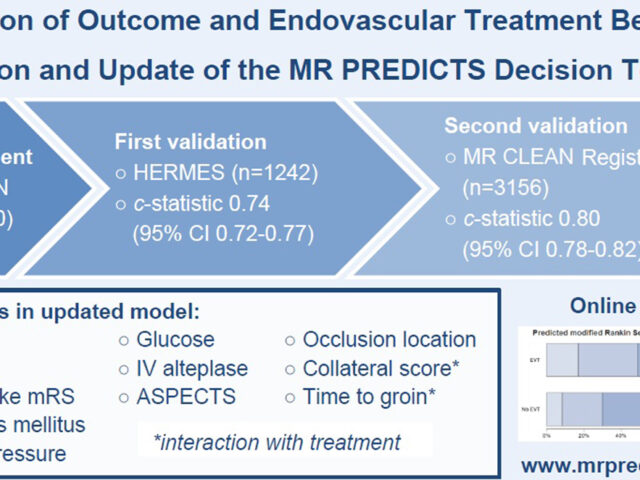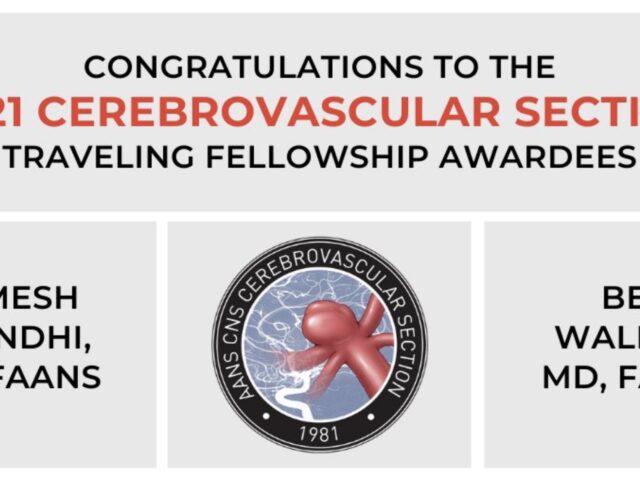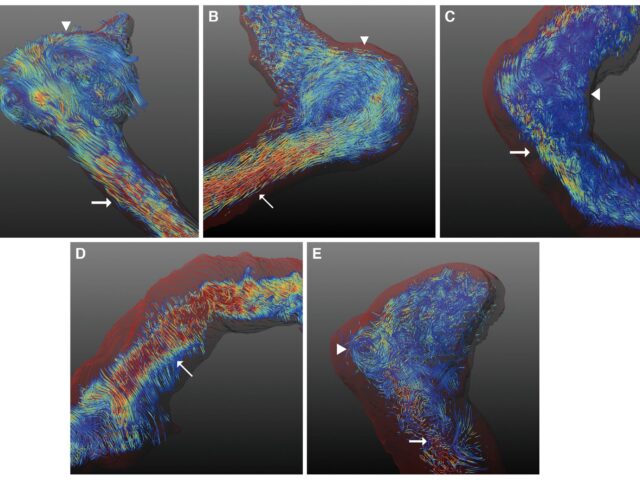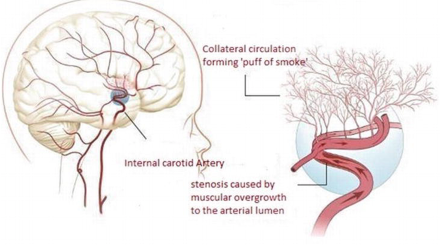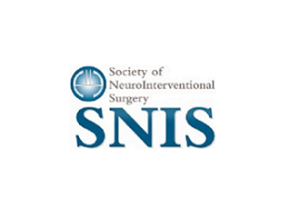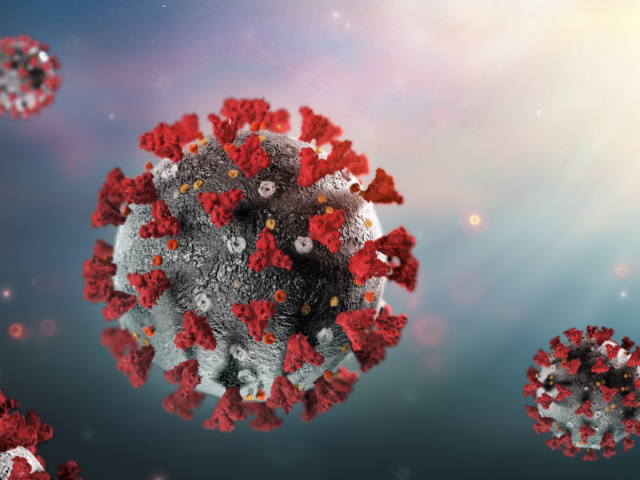Patient and Physician News
Section Editors: Ning Lin and Kunal Vakharia
Joint CV Section Members, The submission deadline for late-breaking abstracts has been extended until June 22! Please visit https://www.snisonline.org/meetings/snis-17th-annual-meeting/www.snisonline.org/meeting/ and click on “Call for Late-Breaking Abstracts.” I would also like to remind our members that online
The memberships of the AANS/CNS Cerebrovascular Section, the Society of NeuroInterventional Surgery and the Society of Vascular & Interventional Neurology all care for patients with cerebrovascular disease and stroke. We feel that is important to acknowledge the difficult and disturbing times that we all are experiencing in the context of health.
COVID-19 syndrome, caused by SARS-CoV-2 virus, has dramatically altered the way hospital systems run and procedures are performed throughout neurosurgery. However, there have been multiple reports of a potential hypercoagulable state associated with SARS-CoV-2 virus, necessitating the emergent need for neurointerventional procedures throughout the pandemic.
The AANS/CNS Cerebrovascular Section Traveling Fellowship allows a practicing CAST-certified neurointerventionalist (of any specialty) to visit a high-volume cerebrovascular center to complete a one-week observership. Travel, housing and a modest honorarium are included.
The 2018 American Heart Association/American Stroke Association guidelines for early management of patients with acute ischemic stroke (AIS) has been published. This is an updated document from 2013 AHA/ASA Acute Ischemic Stroke guidelines and 2015 AHA/ASA AIS guidelines regarding endovascular therapy. A few highlights from the current guideline:–While the guidelines recommend development of regional stroke centers with different capabilities (i.e. IV tPA ready vs. thrombectomy ready), it does not recommend bypassing the closeast IV tPA ready center to bring the patient to one that offers a higher level of stroke care, citing that further research is needed.–The guidelines recommend systems should be established so that brain imaging studies can be performed within 20 minutes of arrival in the ED in at least 50% of patients who may be candidates for IV tPA and/or mechanical thrombectomy.–The guidelines recommend CTA as part of initial evaluation of acute stroke patient, but should not delay IV tPA if indicated. CTA should be performed in patients with suspect4ed intracranial LVO before obtaining a serum creatinine concentration in patients without a history of renal impairment.–In patients who are potential candidates for mechanical thrombectomy, imaging of the extracranial carotid and vertebral arteries, in addition to the intracranial circulation, is reasonable to provide useful information on patient eligibility and endovascular procedural planning.–In selected patients with AIS within 6 to 24 hours of last known normal who have LVO in the anterior circulation, obtaining CTP, DW-MRI, or MRI perfusion is recommended to aid in patient selection for mechanical thrombectomy.–The use of a proximal balloon guide catheter or a large-bore distal-access catheter, rather than a cervical guide catheter alone, in conjunction with stent retrievers may be beneficial.
In this article recently published in Stroke the authors analyzed 168 patients with spinal dural and epidural arteriovenous fistulas from 31 centers. Six readers analyzed the angioarchitecture. Approximately half of the epidural fistulas were incorrectly diagnosed as dural fistulas at the individual centers highlighting the need to establish and publish distinguishing features.Dural fistuals are more commonly located in the thoracic spine whereas epidural fistulas have a propensity for the lumbar spine and are associated with a history of spinal injury or surgery. Both are more common in males and present with myelopathy. Spinal dural fistulas have their shunt point medial to the medial interpedicle line and shunt into the bridging vein (runs apart from the nerve root) or radiculomedullary vein. They are supplied by meningeal branches of the radiculomeningeal artery. Epidural fistulas form epidural venous pouches located in the epidural space and shunt into the perimedullary vein, paravertebral veins, or both. They are supplied by epidural arteries, usually the dorsal somatic branch.The distinction is also relevant for treatment. Whereas dural fistulas are favorable for open surgery and intradural division of the draining vein, epidural fistulas are better served by endovascular embolization. Feeders to epidural fistulas also tend to be straight and more easily accessible using the endovascular route.
Perioperative strokes (POS) are rare but serious complications and usually cannot be treated with IV thrombolysis depending on the surgical site and of the delay from surgery. A recent study aims to investigate the safety and effectiveness of mechanical thrombectomy in this group of patients.
JCVS Traveling fellowshipIntroducing the NEW Joint CV Section Neurovascular Traveling Fellowship for the 2018-2019 YearThe fellowship grant is a funded travel experience designed to allow mid-career trained cerebrovascular/endovascular specialists match with a host institution for 5 days to gain targeted experience in an area of significant interest to them.Applicant requirements:• CAST certified individual OR demonstrable, significant open cerebrovascular practice• JVCS section member OR SNIS member• Board certified in specialty• (not restricted to Neurosurgeons)Host requirements:• CAST approved fellowship program OR demonstrable significant cerebrovascular/endovascular expertise in the area the applicant is seeking• Appropriate case volume pertaining to the specific projectApplication Deadline – Midnight, December 1, 2017Grant Amount – $5,000 plus up to $2,500 for travel and lodgingFellowship dates – any consecutive 5 day block between July 1, 2018 to June 30, 2019For additional details regarding this opportunity and to obtain the complete the application click HERE!
The Contact Aspiration vs Stent Retriever for Successful Revascularization (ASTER) trial was a randomized, open-label, blinded endpoint multicenter study conducted in comprehensive stroke centers across France from October 2015 to October 2016. Patients who presented with acute ischemic stroke and a large vessel occlusion in the anterior circulation (intracranial internal carotid artery, M1 or M2 segments of the middle cerebral artery) within 6 hours of symptom onset were included. Before switching techniques, operators were asked to perform at least 3 attempts with the assigned treatment.The total number of patients assigned to first-line contact aspiration was 192 whereas first-line stent retriever was assigned to 189 patients. In the intention-to-treat analysis, there were no differences with respect to successful revascularization defined as TICI 2b or 3, NIHSS at 24 hours, mRS at 90 days, and adverse events. Successful revascularization was accomplished in approximately 80% of patients and functional independence in 45-50%.These results are of particular interest as the corresponding trial in the US, the COMPASS Trial: a Direct Aspiration First Pass Technique (COMPASS), is expected to be publicized soon.
What is the ideal head position in the setting of an acute stroke? Does lying flat increase cerebral perfusion and improve clinical outcome? A recent study published in the New England Journal of Medicine assigned over 11,000 patients with an acute stroke, 85% ischemic, either a flat or a sitting-up position with the head elevated at least 30 degrees.The position was maintained from admission (at a median of 14 hours from stroke onset) for 24 hours. Disability, as measured by the modified Rankin score at 90 days, was the main outcome measure.Patients randomized to the lying flat position were less likely to maintain that position. There was no difference in functional outcome between the 2 groups at 90 days. Laying flat did not increase the rate of serious side effects such as pneumonia.Interestingly, the trial also included spontaneous intracerebral hemorrhage patients (approximately 8% in each group), but not subarachnoid hemorrhage.The median NIHSS was 4 in each group. Of patients with acute ischemic stroke, about 30% had large vessel occlusion.With exception of the head positioning, little information of the stroke management is provided. Did patients get IV tPA? Did some patients get thrombectomy (less likely with a median NIHSS of 4)? How were the cerebral hemorrhages managed? The majority of patients were outside the time window for any thrombolytic therapy by the time head positioning was initiated.
SAMMPRIS trial showed 30-day rate of stroke or death was higher in the PTAS group and than in the medical-management group. In a follow-up study, investigators studied the frequency of symptomatic in-stent restenosis (ISR) and its contribution to nonprocedural symptomatic infarction.In this study, 27 of 183 patients (14.8%) in the stenting group without a periprocedural primary end point had a symptomatic infarction and 16 (8.7%) had transient ischemic attack alone in the territory during a median follow-up of 35.0 months. Adequate vascular imaging to evaluate ISR was available in 24 patients with infarctions (showing ISR in 16 [66.7%]) and in 10 patients with TIA alone (showing ISR in 8 [80%]). The 1-, 2-, and 3-year rates (with 95% confidence limits) for symptomatic ISR in the SAMMPRIS stent cohort were 9.6% (6.1%–14.9%), 11.3% (7.5%–17.0%), and 14.0% (9.6%–20.2%), respectively. The authors concluded that symptomatic ISR occurred in at least 1 of 7 patients in SAMMPRIS by 3 years of follow-up and was likely responsible for the majority of nonprocedural cerebral infarctions.
The study included 118 institutions and 8533 patients (endovascular treatment for acute ischemic stroke) and was published in the journal Stroke recently. Both mortality and mortality index, the ratio of observed to expected mortality based on the comorbidity and demographic profile, were assessed. Overall, directly admitted patients fared better than those that required a transfer. There was a progressive decrease in mortality from low to medium and high volume centers. Patients transferred to high-volume centers had a lower mortality than those directly admitted to low volume institutions.The mean endovascular case number per institution was 72 and included patients admitted for the treatment of acute ischemic stroke from October 2012 to June 2016. Per year that equated to a mean number of 19 ranging from 1 to 165. Of all strokes admitted, 4.5% were treated with revascularization ranging from 0.3 to 20.1%.Over the 45 month study period low volume centers were defined as < 27 cases, medium as 27 to 132, and high volume as > 132 cases. Only 11 centers were classified as high volume.The study shows that patient that are transferred to a high volume center do better in terms of mortality than being treated in a low volume center even if they are first seen there. There are several observations that also deserve discussion. Only 11 centers were classified as high volume, clearly not many across the US. With the accreditation of additional comprehensive stroke centers that number may go up as long as a sufficient number of cases is transferred. The study included the years before 2015 when endovascular therapy for acute ischemic stroke really started gaining momentum. Also, the number of physicians trained or training in neuroendovascular is increasing dramatically. From 800 just a few years ago to currently around 1200 according to some sources. How will more patients be transferred to high-volume centers if there are more and more hospitals overall staffed by neurointerventionalists performing these procedures?
A recently published study from a large stroke database in China found that risk of symptomatic ICH in Asian population was higher than previous RCTs, which predominantly enrolled Caucasians. The investigators utilized data from Endovascular Treatment for Acute Anterior Circulation Ischemic Stroke Registry (ACTUAL), a multicenter registry program in China, to study the predictors for symptomatic ICH.Of 632 enrolled patients from 2014-2016, 101 (16.0%) had symptomatic ICH within 72 hours after thrombectomy. Ninety-day mortality was higher in patients with SICH than in patients without SICH (65.3% versus 18.8%; P<0.001). The risk factors for sICH included ASPECT score< 6, multiple passes > 3, cardioembolic stroke type, and baseline neurophil ratio > 0.83. While this is a retrospective registry analysis, and endovascular treatment protocols as well as peri-operative blood pressure parameters are not standardized, the study provides important insights into the risks of endovascular intervention for an ethic group that is known to have higher risks of ischemic strokes.
Eloquence is one of the most critical features surrounding the natural history and management of brain arteriovenous malformations (AVMs). In a study published ahead-of-print this week in the Journal of Neurosurgery, 201 consecutive patients with brain AVMs that underwent preoperative functional MRI and diffusion-tensor imaging followed by microsurgical resection were assessed. The distance from the nidus to eloquence (eloquent cortex and fiber tracts) was measured.
In this recently published study, the investigators performed gadolinium-enhanced MRI to identify the rate of vessel wall permeability impairment and blood-CSF barrier (BCSFB) disruption. A prospective cohort of 60 patients were included in this study. Vessel wall permeability impairment was defined as vessel wall enhancement on MRI 24-48 hrs after thrombectomy, and severe BCSFB disruption was identified as subarachnoid hemorrhage or gadolinium sulcal enhancement (present across >10 slices).Overall, 34 (57%) patients had vessel wall enhancement and 27 (45%) had severe BCSFB disruption. Multiple stent-retriever pass was significantly associated with both vessel wall enhancement and BCSFB disruption, which were also associated with poor functional outcome. While the ideal diagnostic means for vessel wall damage during mechanical thrombectomy can be further debated, this study shed light on the potential harm of multiple stent-retriever pass during stroke intervention
Data on ruptured cerebral aneurysms left unsecured are from the 1960s. This month in the journal Stroke, a group of researchers from Helsinki in Finland published their findings in a more recent cohort. The authors identified 510 patients out of 6850 in their registry that had an untreated, but ruptured cerebral aneurysm between 1968 and 2007.Overall, the 1, 5, and 10 year mortality rates in these patients were 65%, 69%, and 76%, respectively. About 90% of patients admitted with poor grade were deceased at 1 year. Good grade patients admitted within 7 days of symptom onset had a 75% 1-year mortality. Patients with delayed admission had a notably lower mortality rate, possibly indicating a natural selection process.While there are several limitations of the study that include the change of definition of poor grade over the years, change in neurosurgical management of aneurysmal subarachnoid hemorrhage over time, referral bias, and exclusion of patients that may have died prior to coming to any medical attention, it does illustrate the high mortality in not treating ruptured aneurysms. And the data are even worse than those from the 1960s.
In this study recently presented at the International Stroke Conference, investigators followed a large cohort of patients with known intracranial aneurysms and analyzed demographic and clinical factors that are associated with aneurysm growth.Not surprisingly, the study found that mean initial size at diagnosis (OR: 1.09, 95% CI: 1.01-1.18, p=0.036), multiple aneurysms (OR: 2.01, 95% CI: 1.00-4.04, p=0.048), and family history (OR: 4.25, 95% CI: 1.18-15.3, p=0.041) were associated with risk of aneurysm growth. Additionally, diagnoses of coronary artery disease (CAD) (p<0.001) and diabetes (p=0.041) were also significant for growth rate. Moreover, there was an increased occurrence of growth at MCA-Bifurcation (p=0.015 vs. other MCA sites) and a high growth rate for those located in the BA trunk (p=0.0033 vs. other VABA sites).http://stroke.ahajournals.org/content/48/Suppl_1/A200
The Woven EndoBridge (WEB) technique represents an intrasaccular device designed to obliterate cerebral aneurysms and was first introduced approximately 4 years ago. Currently there are 3 versions including a double and single layer cube and a single layer sphere. The primary target aneurysm has a wide neck difficult to treat with conventional endovascular techniques. In this study, the authors reviewed 109 patients with 112 aneurysms treated with WEB across the United Kingdom. Aneurysms were most commonly located in the basilar apex followed by the middle cerebral artery.
In 92.9% of procedures or 94.5% of patients, the WEB device was successfully deployed. In 36.7% of patients, an adverse event was recorded. Adverse events related to the WEB device were encountered in 15.6% of patients, symptomatic in 1.8%. Thromboembolism occurred in 15.6% of patients and was symptomatic in 6.4% of patients. One hundred patients had clinical follow-up beyond 3 months. Radiographic follow-up was not reported.
There are several questions that remain. How does WEB compare to primary coiling or stent-assisted coiling in terms of recanalization? What is the ideal antiplatelet management? Antiplatelet management was not standardized in the current study. How many patients were screened for WEB and found unsuitable. Is the WEB only an option for a small subset of cerebral aneurysms.
In 2015, 5 large randomized clinical trials demonstrated that mechanical thrombectomy substantially improves functional outcome of patients presenting with acute ischemic stroke. The positive results of the trials were largely attributed to screening for large vessel occlusion and high recanalization rates made possible because of advancements in the thrombectomy devices used. In that context, efforts are concentrated to identify patient-specific factors that may more accurately predict successful recanalization.In an article published in Stroke this month, the burden of calcification in the intracranial internal carotid artery (ICA) (horizontal petrous segment to bifurcation) was quantitatively measured in patients undergoing mechanical thrombectomy and correlated to the recanalization and functional outcome. The total amount of intracranial ICA calcification was defined as the sum of calcification volume of the right and left side. A total of 194 patients were included. Complete revascularization was defined as TICI 2b or greater and good functional outcome as mRS 0-2 at 3 months. Complete revascularization rate was achieved in 77.3% in patients and good functional outcome in 45.9%. More than 80% of patients had intracranial ICA calcification and increasing total volume and volume on the symptomatic side correlated with worse recanalization rates and functional outcome.The article represents an important contribution to the literature on mechanical thrombectomy. Its clinical applicability remains to be determined as the prevalence of these calcifications is very high (> 80% in the present study) and the calcification burden cannot be readily assessed in an emergency situation. Rapid assessment tools of intracranial ICA calcification need to be developed and validated.The full text can be accessed here.
The CV section is pleased to announce that medical students interested in the issues of cerebrovascular and endovascular neurosurgery are now welcome to join the section.
Call for action by all members to support the initiatives by US representatives Pat Tiberi (R-OH) and Richard Neal (D-MA) have introduced a resolution (H. Res. 522) that would designate September 2014 as “National Brain Aneurysm Awareness Month.” A similar resolution (S. Res. 353) was introduced by Sen. Ed Markey (D-MA). Since neurosurgeons play a crucial role in the treatment of brain aneurysms, the AANS and CNS have endorsed these resolutions and are encouraging neurosurgeons to urge their elected officials to cosponsor this initiative. Attached are the letters that we sent to the sponsors of the legislation. The letter to Senator Markey can be found here, the letter to representatives Tiberi and Neal here.
